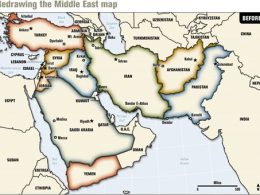Introduction
The U.S. Air Force recently moved 31 F-16 Fighting Falcons and about 1,000 airmen from Kunsan Air Base to Osan Air Base in South Korea. The move creates a new “super squadron,” part of a plan to expand flight missions, bolster combat power, and improve defenses in the region. The change signals how the U.S. is adjusting its strategy in the Indo-Pacific to respond more quickly to potential threats.
In early 2024, the Air Force tested the concept by moving nine jets and 150 personnel to Osan. The small test worked well, showing that larger units can operate efficiently. Based on that success, the Air Force has now expanded the plan. It’s part of a broader effort to project air power more effectively across the region.
What is a super squadron?
A super squadron is a large fighter unit that has more aircraft and personnel than a standard squadron. Typically, a squadron has 18 to 24 jets, but a super squadron can have 30 or more. It also includes entire teams for maintenance, supply, and operations, all under a single command.
The main goal is to make flying missions faster and easier. At Osan, the super squadron is part of the Air Force’s Agile Combat Employment (ACE) concept. ACE focuses on rapid movement, readiness, and flexible responses to any threat in the area.
Why Osan Air Base?
Osan is about 80 miles from the Demilitarized Zone (DMZ) with North Korea. This location allows the jets to reach critical areas quickly if needed. The F-16 can respond quickly to missile launches, airspace violations or other emergencies.
“With more planes and people in Osan, we can bring more power in less time,” explained Col. Ryan Lay, commander of the 51st Fighter Wing. The move allows U.S. forces to work more closely with the Republic of Korea Air Force (ROKAF), improving joint training and operational coordination.
Benefits of Super Squadrons
- Better efficiency: Larger squadrons simplify maintenance, repair and supply management because all teams are centralized.
- Faster response: Jets can reach critical areas more quickly, increasing overall defense readiness.
- Stronger teamwork: Working with the ROKAF strengthens collaboration and shared expertise in real-world missions.
Risks to consider
- High risk: Concentrating many jets in one place can make them easy targets for missile attacks.
- Base pressure: Osan’s infrastructure hangars, housing and support areas — is under greater strain with so many personnel and aircraft.
- Fewer backups: Relying heavily on one base reduces options if there is a threat or emergency elsewhere.
The Air Force plans to test the Super Squadron for a year. “We want to see if a larger unit can provide more power while remaining effective and safe,” said Capt. Bryce Hughes, 51st Maintenance Group. The trial will help the Air Force balance strength with operational security.
The F-16’s Role
The F-16 is one of the U.S. Air Force’s most reliable fighter jets. In Osan, the jet is equipped with smart weapons, advanced radar, and electronic systems.
The aircraft can perform multiple missions, including air defense, attacking enemy defenses, and providing ground support. Its simplicity, reliability, and ability to work with allied forces make it valuable even as the Air Force introduces new jets like the F-35 or future sixth-generation fighters.
Looking Ahead in the Indo-Pacific
If the Super Squadron model works in Osan, the Air Force could expand it to other locations like Taiwan, Japan, Guam, or the Philippines. It could also be applied to advanced aircraft like the F-35A or future jets.
This approach reflects the U.S. desire for faster response times, more flexible force deployments, and better protection against missile threats. It also demonstrates strong support for regional allies amid rising tensions with North Korea, China, and the broader Indo-Pacific.
Strategic Impact
The creation of the Super Squadron signals a new phase in U.S. military strategy. By testing larger units, the Air Force is exploring how to maximize combat power while reducing response times. It also reflects a shift toward network operations, where multiple aircraft and units can closely coordinate to achieve mission objectives.
The model could influence future decisions about deploying advanced fighter jets and unmanned systems. It emphasizes flexibility, rapid response, and collaboration with partner nations, demonstrating how modern air power adapts to evolving threats.
Conclusion
The relocation of 31 F-16 jets and 1,000 airmen to Osan Air Base is more than just a relocation. It is a test of how the Air Force can implement new strategies to maintain air superiority and protect allies in a high-risk area. The Super Squadron concept strengthens response capabilities, enhances joint training with the ROKAF, and improves operational efficiency.
The F-16 remains essential, providing reliability, versatility, and compatibility with partners. As the U.S. refines this approach, it can expand Super Squadrons to other locations in the Indo-Pacific, keeping pace with changing threats and modern combat strategies.
Read More: Source Link












